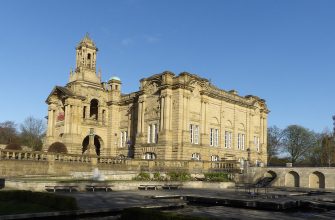The Sedgwick Museum of Earth Sciences, located in the heart of Cambridge, England, is a treasure trove for anyone interested in geology, fossils, and natural history. As part of the University of Cambridge, the museum is a hub for research and education, offering a wealth of collections and exhibitions that span billions of years of Earth’s history. Whether you’re a seasoned geologist, a budding paleontologist, or simply curious about the natural world, the Sedgwick Museum is a must-visit destination.
History of the Sedgwick Museum
The Sedgwick Museum of Earth Sciences was established in 1728, making it one of the oldest geological museums in the world. It was named after Adam Sedgwick, one of the founders of modern geology, who served as the Woodwardian Professor of Geology at Cambridge from 1818 to 1873. The museum’s collections have grown significantly over the centuries, thanks to the contributions of many notable geologists and paleontologists. Today, the museum houses over 2 million specimens, ranging from tiny microfossils to massive dinosaur skeletons.
What to See at the Sedgwick Museum
The Sedgwick Museum’s collections cover a wide range of Earth sciences, including geology, paleontology, mineralogy, and petrology. Here are some highlights:
- The Beagle Collection: This collection contains fossils collected by Charles Darwin during his voyage on the HMS Beagle.
- The Woodwardian Collection: Named after John Woodward, the founder of the museum, this collection includes a wide variety of fossils, rocks, and minerals.
- The Sedgwick Collection: This collection features specimens collected by Adam Sedgwick himself, including many from the Lake District and Wales.
- The Mineral Gallery: This gallery showcases a dazzling array of minerals from around the world, including gemstones, ores, and meteorites.
Exhibitions and Research at the Sedgwick Museum
In addition to its permanent collections, the Sedgwick Museum also hosts temporary exhibitions that delve into specific topics in Earth sciences. These exhibitions often feature cutting-edge research conducted by scientists at the University of Cambridge and beyond. The museum also offers a range of educational programs and resources for schools, families, and adult learners.
Visiting the Sedgwick Museum
The Sedgwick Museum is open to the public and admission is free, although donations are welcome. The museum is wheelchair accessible and offers a range of facilities, including a shop and a picnic area. Guided tours are available for groups, but must be booked in advance. The museum is located on Downing Street in Cambridge, within easy walking distance of many other attractions, including the Fitzwilliam Museum and the Cambridge University Botanic Garden.
Tips for Tourists
- Plan to spend at least a couple of hours at the museum to fully explore its collections.
- Don’t miss the museum’s interactive displays, which offer hands-on learning opportunities for visitors of all ages.
- Check the museum’s website for information about upcoming exhibitions and events.
- If you’re visiting with children, be sure to pick up a free explorer backpack at the reception desk. These backpacks are filled with activities and tools to help young visitors engage with the museum’s collections.
In conclusion, the Sedgwick Museum of Earth Sciences is a fascinating destination for anyone interested in the natural world. With its rich history, diverse collections, and engaging exhibitions, the museum offers a unique opportunity to delve into the mysteries of our planet’s past.








